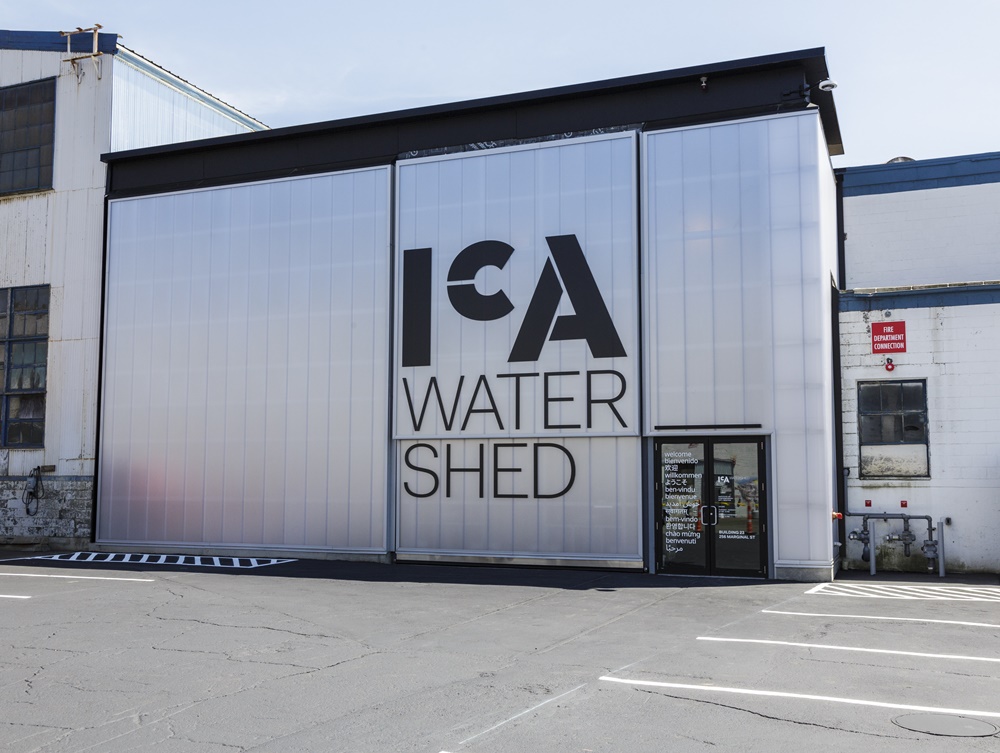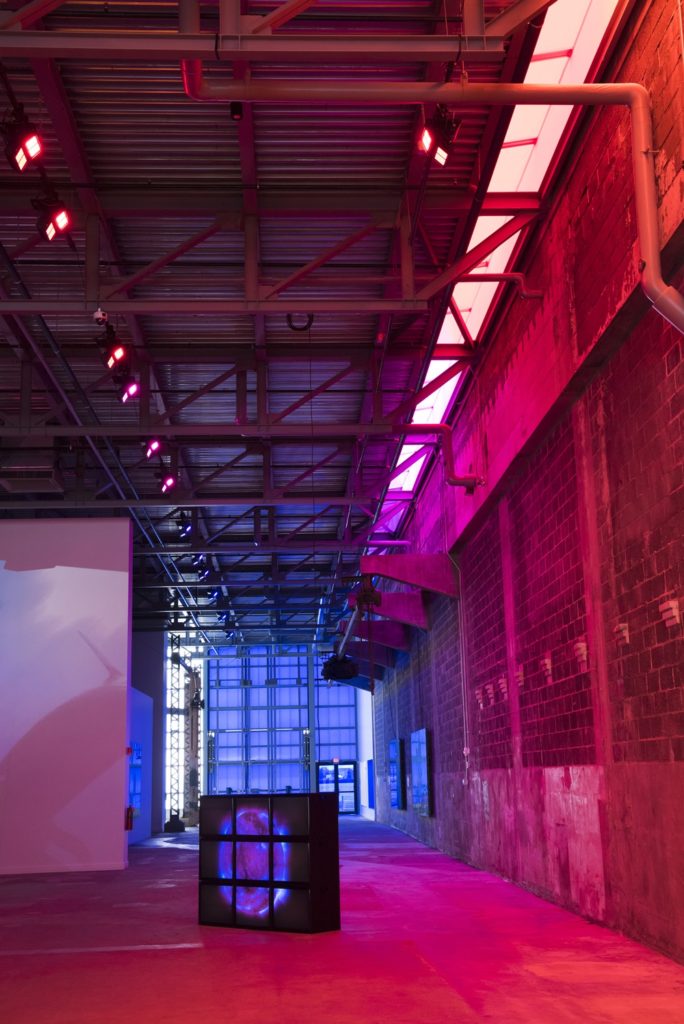On View
ICA Boston Wants to ‘Literally and Figuratively Transport Visitors’ With Its New Shipyard Satellite Space
The inaugural show features installations by artist Diana Thater.

The inaugural show features installations by artist Diana Thater.

Eileen Kinsella

It’s been a little more than a decade since Boston’s Institute of Contemporary Art debuted its splashy new building on the Boston Harbor. Now, just in time for the 4th of July, the museum is launching an ambitious new satellite space directly across the water in East Boston, called ICA Watershed.
The idea to expand to another space aligns with the museum’s mission to deepen community and audience engagement while “activating” and improving access to the harbor. It has been percolating from day one, ICA director Jill Medvedow told artnet News.
“When we opened in 2006, we thought long and hard about what resources we could bring to the city now that we had our new building and our new space,” says Medvedow. “From where I sit in my office, I look directly across the harbor, so East Boston has been in my sight since we opened in December 2006.”

At the June 22 ribbon-cutting ceremony for ICA Watershed. Left to right: Joshua Brandt, Ed Flynn, Thomas P. Glynn, Steven Corkin, Jill Medvedow, Ellen Matilda, Mayor Marty Walsh, Adrian Madaro, Lydia Edwards, Joseph Boncore, Diana Thater, Nick Winton. Photo: Liza Voll.
By the time ICA began having conversations with Massport, the entity that oversees the harbor, Medvedow said she had already “fallen in love” with the working shipyard and marina across the water and that the ICA had hosted several summer parties there.
Boston “doesn’t have a lot of raw industrial space and I began to think this would be a model for growth that felt a little bit unconventional,” she says. Visitors can get there via a six-minute ferry ride that comes free with an ICA admission ticket.
ICA leaders were initially dismayed to learn that all the spaces in the shipyard were leased. But then an opportunity appeared—a condemned building.
“That became the place that we explored, investigated, and ultimately made the commitment to renovate and take from a liability—it was raining inside and a mess—and transform it into this new venue for us and for the city,” says Medvedow.

Installation view of Diana Thater’s work at the ICA Watershed, 2018. Courtesy of the artist and David Zwirner, New York/London/Hong Kong. Photo by Liza Voll Photography © Diana Thater.
The inaugural show centers on two installations by artist DIana Thater, which were customized for the space. There’s her light projection, moving-image and color environment video, Delphine, and A Runaway World, a video installation that looks at species on the verge of extinction.
“[Thater] really stood out as someone that I thought could take on the particulars of our space,” says ICA chief curator Eva Respini, who invited Thater for the inaugural show. Respini says she was struck by a previous installation of Delphine at the Dia Center for the Arts. “It really remained with me for the way in which she married moving image, lights, and sort of ephemeral materials with architecture,” she says.
Thater’s work “speaks so eloquently about the beauty and the preciousness of the ocean and its inhabitants,” adds Medvedow. Now that the ICA occupies spaces on both sides of the harbor, there’s new opportunities to address issues related to “the vulnerabilities of the ocean and, of course, rising sea levels,” she says.

Installation view of a photography exhibition from members of the ICA’s teen art program, “Teen Perspective: Portraits of East Boston,” at ICA Watershed. Photo by Liza Voll Photography.
The 15,000-square-foot ICA Watershed also has a gallery dedicated to the rich history of the shipyard and the East Boston area. Medvedow says that immigration has long been a part of the neighborhood’s social fabric, beginning with Jewish, Irish, and Italian immigrants, and more recently those from Central and South America. Currently, the neighborhood is about 57 percent Spanish speaking.
“I think we have a lot to learn about our new neighbors in East Boston,” says Medvedow, adding that ICA leaders have spent the past year meeting with community groups and civic leaders. “We’ve identified some core partnerships. I think we’re at the bottom of a pretty steep learning curve.
The excitement was palpable at the June 22 ribbon-cutting ceremony with many local officials in attendance. The state of Massachusetts has already proclaimed that date “Watershed Day,” says Medvedow.
It seems many share her hope that venturing across the harbor to the Watershed will “literally and figuratively transport visitors.”